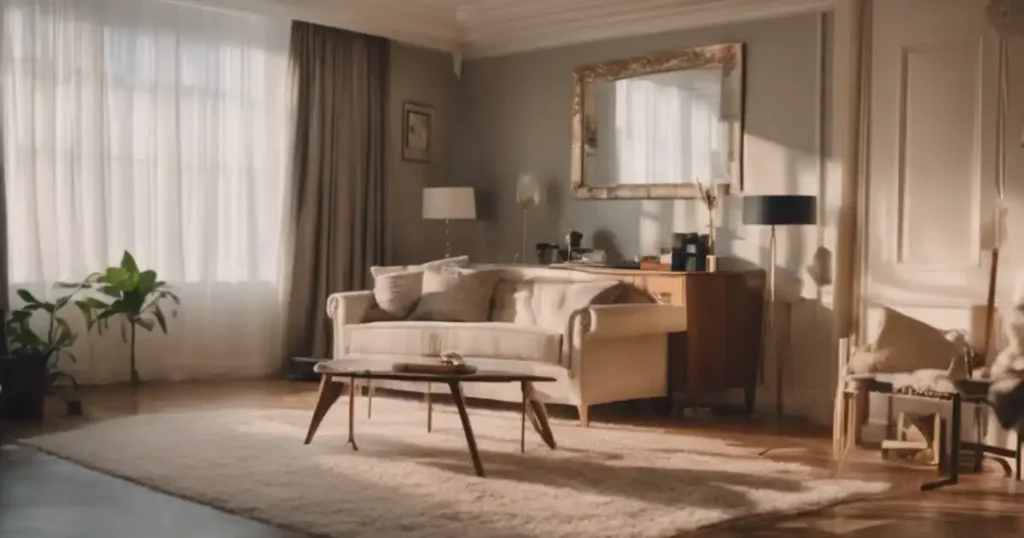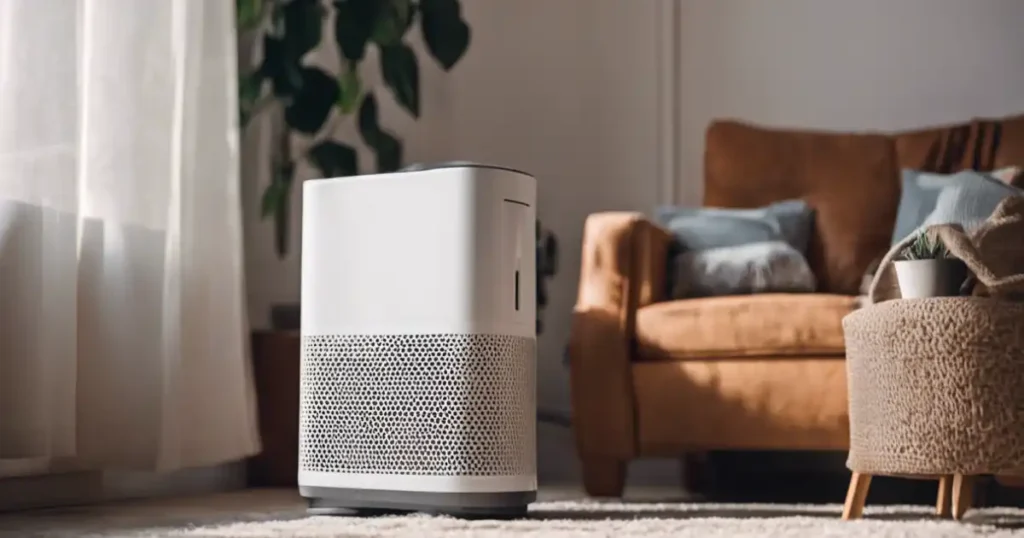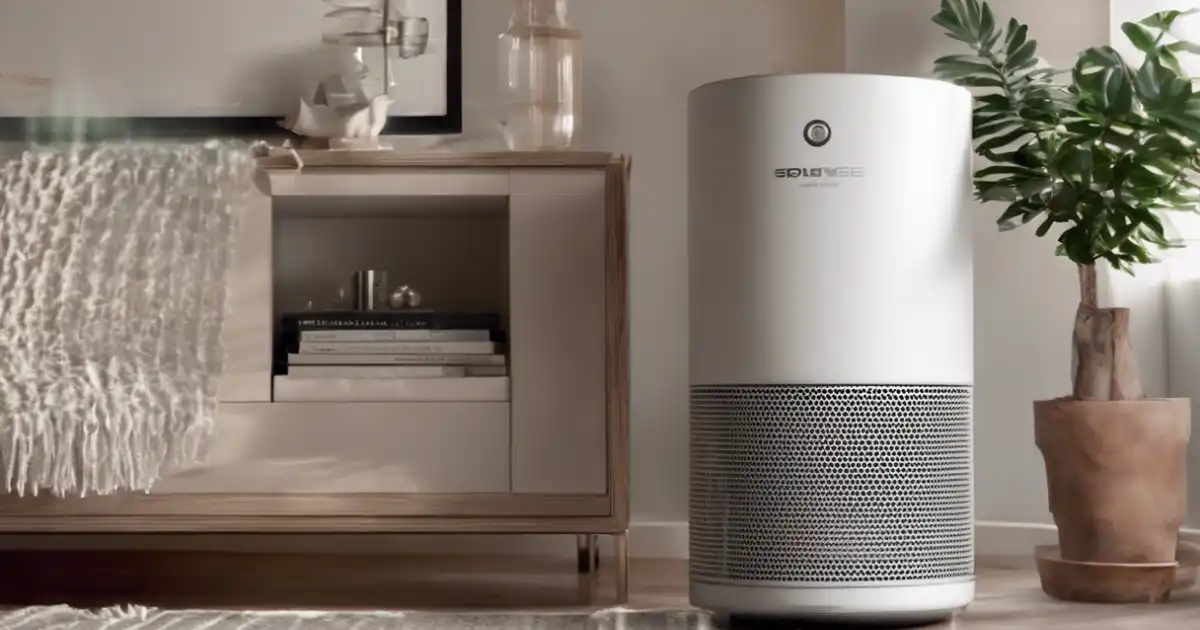Indoor air quality significantly impacts comfort, health, and productivity. Yet it’s estimated we breathe in air that is 2 to 5 times more polluted than outdoors. This is where air purifiers come in – these handy appliances filter out irritants, odors, and pollutants so you can breathe a little easier in your home.
One common question is how long you need to run an air purifier to effectively clean the air.
Generally, it is recommended to run an air purifier for at least 12 hours a day. This runtime will ensure that the air in your home or workplace stays clean and fresh.
Keep reading to know about optimal purifier run times, including:
- How long it takes for an air purifier to clean a room
- If you can leave it running all the time
- The costs of 24/7 operation
- Maintenance tips for long-term performance
How Long to Run an Air Purifier?
Most experts recommend running your purifier continuously as much as possible. Modern HEPA units are energy-efficient and safe to operate 24/7. That being said, factors like room size, air quality conditions, and purifier settings can impact how long it takes to clean the air effectively.
As a general rule of thumb, 10-12 hours daily is the ideal air purifier runtime. This runtime will ensure that the air in your room is constantly being cleaned and purified. However, for larger rooms, a longer runtime may be necessary.
Similarly, if your house’s air quality is poor, or you have allergies or asthma, you may need to run your air purifier 24 hours a day to achieve the desired results.
Airborne contaminants such as pollen, pet dander, and dust can exacerbate allergy and asthma symptoms. By running a purifier continuously, these particles can be removed from the air, leading to cleaner and healthier indoor air.
Ultimately, the best approach is to experiment with different run times and observe the impact on indoor air quality, making adjustments as needed to find the right balance between effectiveness and efficiency.
How Long Does It Take an Air Purifier to Clean a Room?

When you turn on your air purifier, it starts drawing air in, filtering out pollutants, and releasing clean air back out. This cycle continuously scrubs your indoor air.
But how long should you run your purifier before you notice a difference in the air? That depends on a few factors:
– Room size: Larger rooms logically take longer to purify than smaller spaces. Always choose an appropriately sized model. A purifier matched to the size of the room ensures optimal air circulation and more effective removal of pollutants.
– Speed Settings: Most purifiers feature speed modes ranging from low/quiet night settings to high/turbo fan speed settings. Faster airflow equals quicker processing but increased noise.
– ACH rating: This measures air changes per hour. A higher ACH means the purifier can cycle through more room air each hour. Faster is better for pollutant removal.
– CADR (Clean Air Delivery Rate): Specific to pollutant removal efficiency, CADR provides information on how well the purifier can eliminate particulate contaminants. It’s a crucial metric for making informed decisions about the purifier’s effectiveness.
– Type of filter: The type of filter used also influences the purification duration. Different air filters target specific pollutants, with HEPA filters addressing particles like dust and pollen, while activated carbon filters excel at neutralizing odors and fumes. Understanding your filter’s capabilities enhances the overall purification process.
– Pollutant Levels: The concentration of pollutants in the air influences the purification duration. Higher pollutant levels may require a longer running time for the purifier to achieve best results.
Generally, most air purifiers take about 1-2 hours to effectively cleanse the air in an average room of common household pollutants like dust, dander, and mold spores when run at their highest setting.
Of course, that timeframe shortens considerably for smaller rooms or models with very high ACH ratings. It also assumes typical home conditions without excess sources of pollution being constantly generated or entering from outdoors.
Under those normal circumstances, running your portable air purifier for at least 1-2 hours when you get home or before going to sleep is usually sufficient. Just make sure to keep the doors and windows closed so it can work on recycling and cleaning the indoor air only.
Can You Leave an Air Purifier On All the Time?
Now that you know roughly how long an average purifier takes to clean a room’s air, what about running it 24/7? Is that recommended or even safe?
The answer is yes – it is safe to leave the air purifier on all the time without any problems.
These devices are specially designed for continuous use to provide round-the-clock air purification. Their components, motors, and systems are built to handle this constant workload.
If you have any doubts, check your purifier’s manual for the manufacturer’s official recommendations on run times and safety precautions. Keep in mind that some purifiers, such as ozone generators, may not be recommended to run all the time.
It is essential to note that continuously running the air purifier may also increase energy consumption. Therefore, choosing an energy-efficient model and setting it to the appropriate fan speed is advisable.
Additionally, due to continuous runtime, the filters become clogged with the particles they remove from the air, which can reduce the device’s effectiveness. So, always clean or replace the air purifier filters regularly to keep them working correctly and efficiently.
Is It Expensive to Run an Air Purifier 24/7?
Electricity costs are a legitimate worry when it comes to leaving an appliance on all day and night. However, air purifiers use relatively little power compared to major energy drains like heating/cooling systems.
Most portable models only draw between 50 to 100 watts at their highest speed. To put that in perspective, here are some comparisons:
So, even cheaper low-end air purifiers use about the same power as an old-fashioned light bulb when running non-stop. And many ENERGY STAR-rated smart air purifiers use less than 100 watts on their higher speed settings.
If you did the math, that works out to $5-$10 monthly to run an air purifier continuously, depending on your local electricity rates. It’s relatively inexpensive to use an air purifier for 24 hours.
And, you don’t necessarily have to run it on full blast at all times anyway. Most models let you set timers or schedules, so they automatically cycle on and off at lower speeds. This saves even more on electric costs while still keeping your air fresh.
So, in most cases, you can comfortably leave your air purifier running around the clock without breaking the bank. The clean air and health benefits are well worth the small expenditure for many users.
How Do I Know If My Air Purifier Is Cleaning the Air?

This raises another fair question. How can you verify your air purifier is actually working as designed? Beyond just taking the manufacturer’s word for it, there are a few helpful ways to monitor its effectiveness:
– Built-in sensors: Some models contain digital numerical readouts or color-changing lights showing detected pollution levels. They use onboard particle sensors plus sometimes VOC, CO2, or RH meters. Rising/falling numbers or shifting indicator colors denote real-time changing conditions.
– Visible collection: Check the prefilter or true HEPA filter after a month of use. Accumulated visible dust and hair demonstrate captured debris you’re keeping out of your lungs and home. Change filters regularly when buildup slows airflow.
– Clarity & odor: Your nose and eyes provide the simplest gauges. Notice if the air feels and smells fresher in a room after operating the purifier for a while. Cigarette smoke, cooking fumes, and pet odors diminish over time in cleaned spaces.
– Reduced symptoms: Those sensitive to allergens often feel relief as air purifiers continuously strip irritants from their environment. Less sneezing, improved breathing ease, and better sleep all signal effectiveness targeting personal triggers.
Follow the above indications, and you can rest assured your air purifier investment is actively working to reduce indoor air pollution in your environment. Just remember that changing home conditions also impact air quality, so continual operation is critical for cleaner air in the long term.
Maintenance Tips for Long-Term Effectiveness
Ensuring the long-term effectiveness of your air purifier involves more than just running it continuously. Regular maintenance is crucial to keep the appliance running smoothly and efficiently.
Here are some essential maintenance tips to maximize the performance of your air purifier:
– Clean or Replace Filters Regularly:
The filters in your air purifier play a pivotal role in trapping airborne contaminants. Over time, these filters can become clogged with particles, reducing the device’s effectiveness. Check your purifier’s manual for guidance on filter replacement intervals, and make it a routine to clean or replace them accordingly.
– Follow Manufacturer’s Recommendations:
Always adhere to the manufacturer’s recommendations for maintenance and cleaning. The user manual usually provides guidelines on how often the filters should be changed, how to clean the various components, and any other specific instructions to ensure optimal performance.
– Keep the Air Purifier and Surroundings Clean:
Dust and debris can accumulate on the surface of your air purifier, hindering its performance. Wipe down the exterior regularly and ensure there are no obstructions around the air intake and exhaust areas. A clean environment helps the purifier operate at its best.
– Adjust Settings Based on Conditions:
Be mindful of the air quality conditions in your home. Adjust the purifier settings based on factors such as room size, pollutant levels, and personal health conditions. Experiment with different settings to find the right balance between effectiveness and energy efficiency.
– Regularly Inspect Sensors:
If your air purifier has built-in sensors, ensure they are functioning correctly. These sensors provide real-time information about air quality. If you notice any discrepancies, refer to the user manual for troubleshooting or contact the manufacturer for assistance.
– Inspect for Physical Damage:
Regularly inspect your air purifier for any signs of physical damage or wear. Check the power cord, controls, and the overall condition of the unit. Address any issues promptly to prevent further damage and maintain safe operation.
Conclusion
Indoor air quality has a significant impact on our health and well-being. Installing a quality purifier and running it efficiently is a great way to enjoy clean air at home.
It’s recommended to run an air purifier continuously for 10-12 hours daily, though adjustments may be necessary based on factors mentioned earlier. This runtime ensures your indoor spaces get thoroughly filtered for common household pollutants.
Leaving an air purifier on 24/7 is safe and often recommended, considering the continuous workload these devices are engineered to handle. Although energy consumption is a concern, the cost of continuously running a purifier is relatively low. Choosing an energy-efficient model and regularly cleaning or replacing filters is essential to maintain optimal performance.
FAQs
Should I sleep with my air purifier on?
Yes, it’s recommended to sleep with your air purifier on. Most models are designed for continuous use, ensuring round-the-clock air cleaning. Opt for energy-efficient options, set an appropriate fan speed, and maintain the filters regularly for optimal performance.
Is it bad to run an air purifier 24/7?
No, it’s not bad to run an air purifier 24/7. Most standard portable purifiers are designed for continuous use, and quality models are engineered to handle round-the-clock operations. Keep in mind that continuous use may increase energy consumption, so it is advisable to choose an energy-efficient model and adjust the fan speed accordingly.
Is it safe to keep an air purifier running continuously throughout the day?
Yes, it’s safe to leave your air purifier on all day as long as the unit is properly maintained and used according to the manufacturer’s instructions. Most purifiers are designed to run continuously, and doing so can help maintain consistently clean air.
Is it necessary to have an air purifier in every bedroom?
It depends on individual needs and preferences. If a person has allergies, asthma, or other respiratory conditions, having an air purifier in their bedroom can be beneficial to improve indoor air and reduce symptoms.
Can an air purifier be helpful for people with allergies?
Yes, air purifiers can help reduce allergy symptoms by removing air pollutants such as pollen, dust mites, pet dander, and mold spores from the air. These air cleaners can help alleviate symptoms such as sneezing, snoring, and itchy eyes by reducing the allergens in the air.

